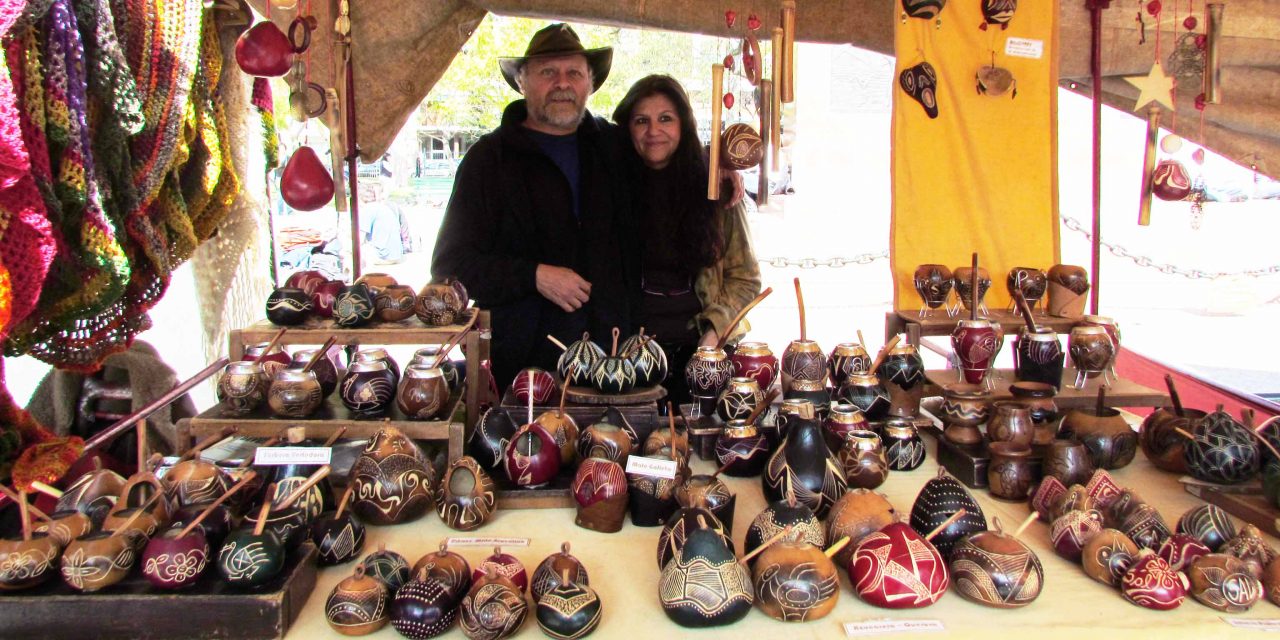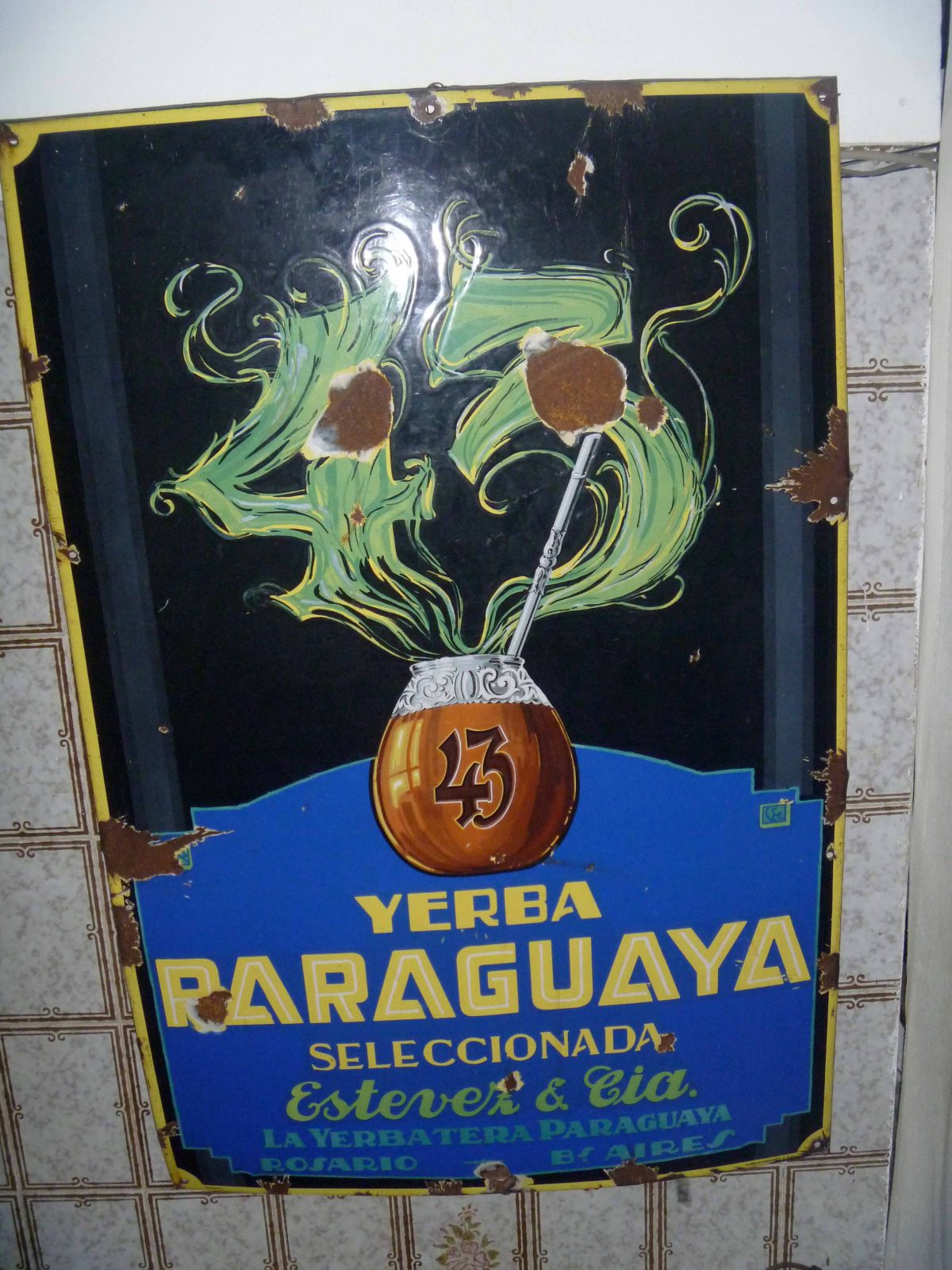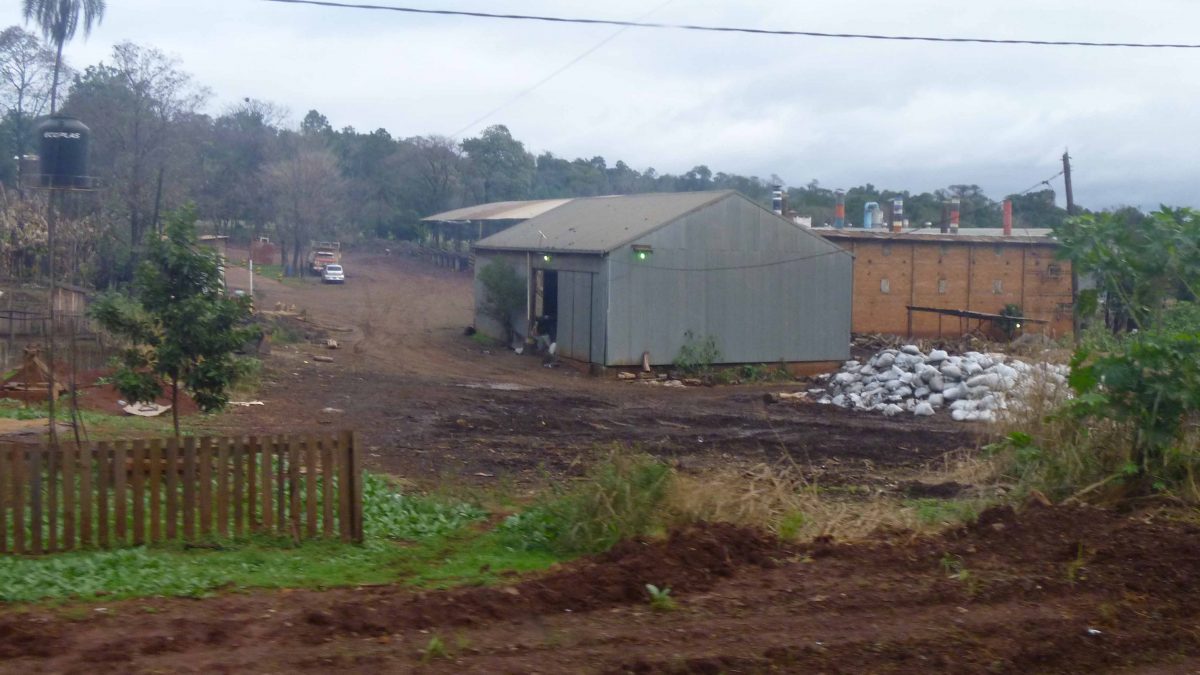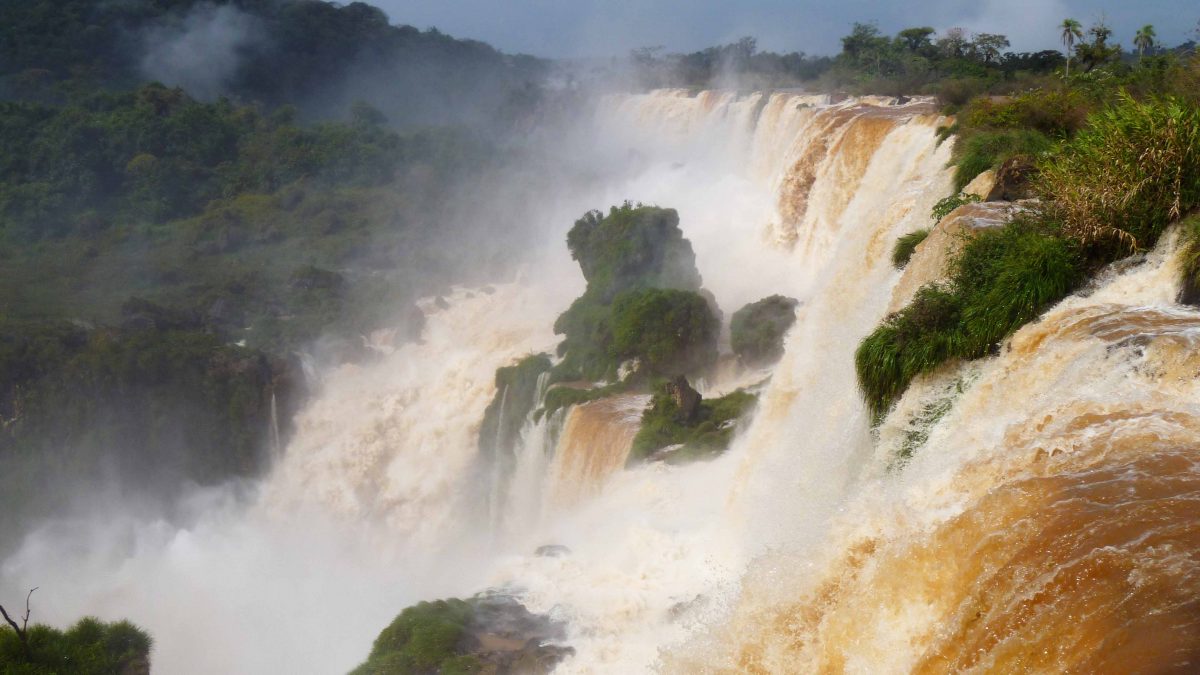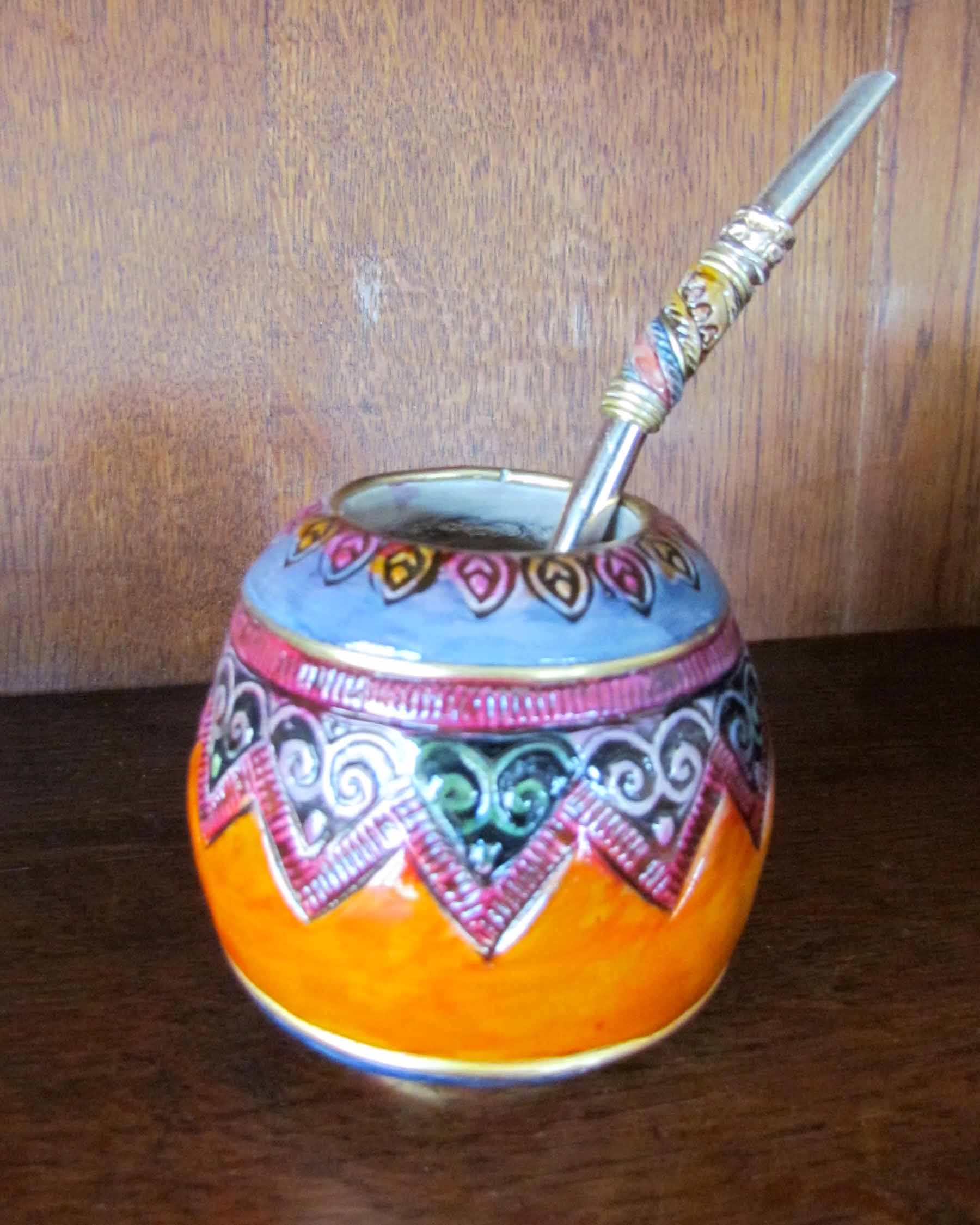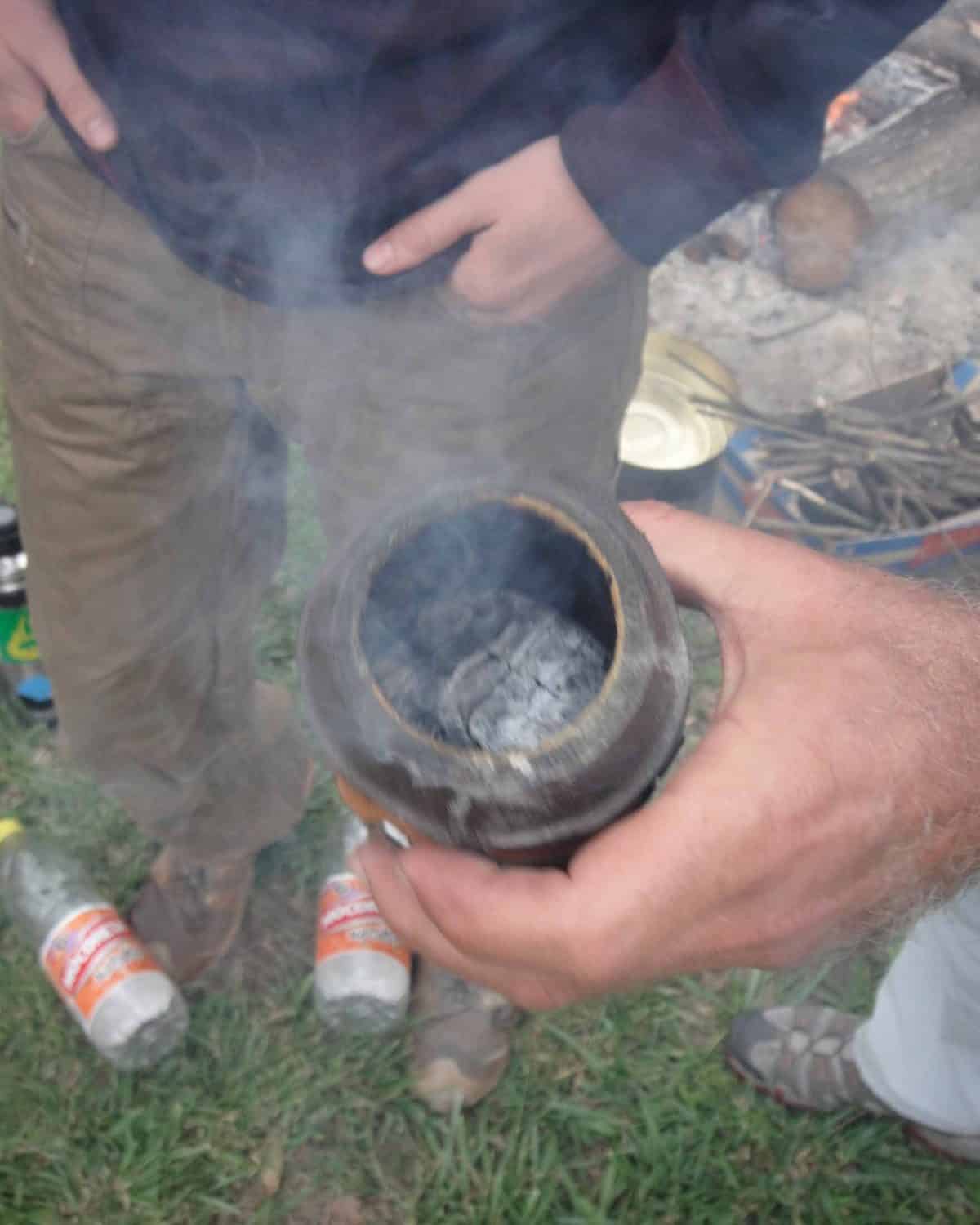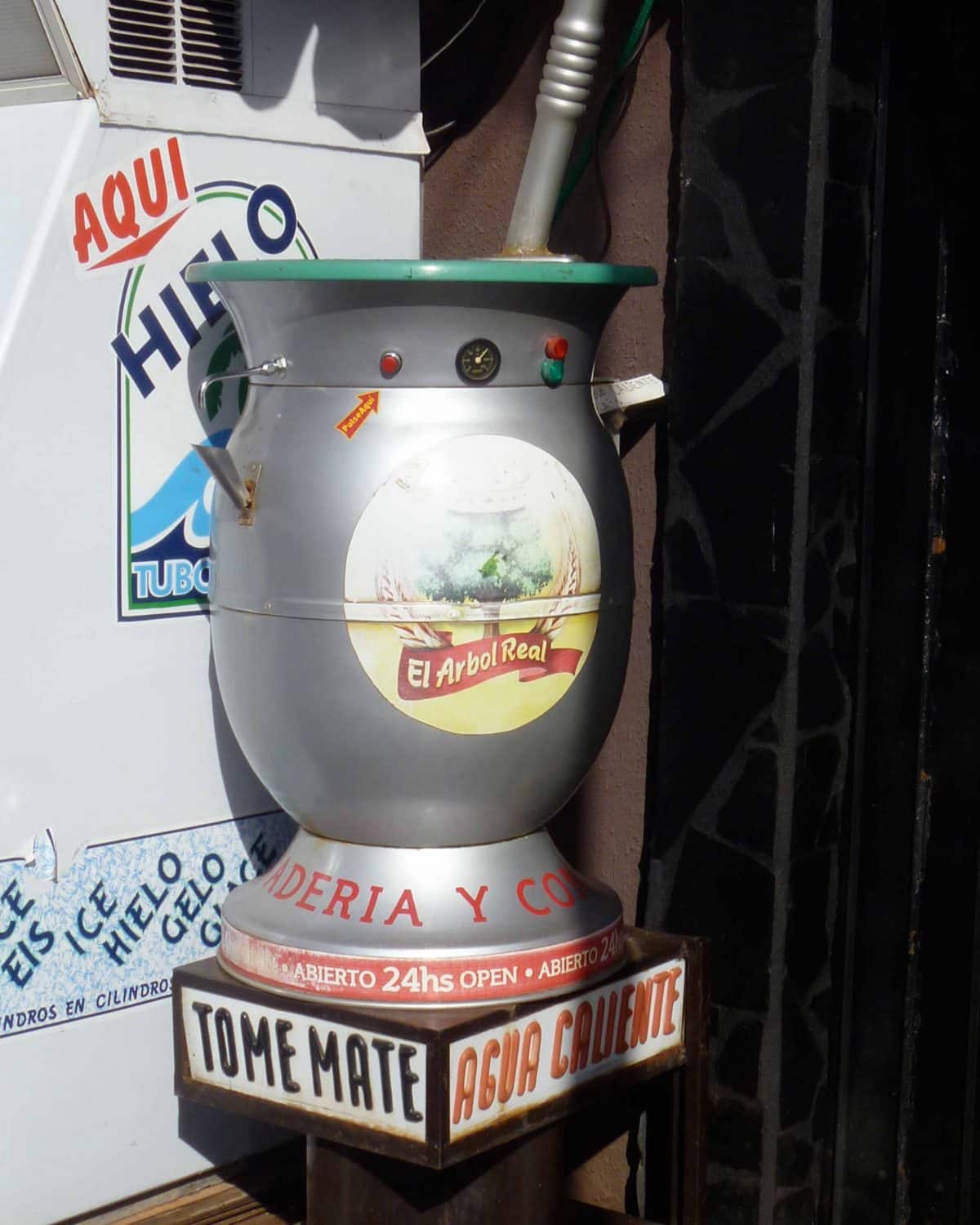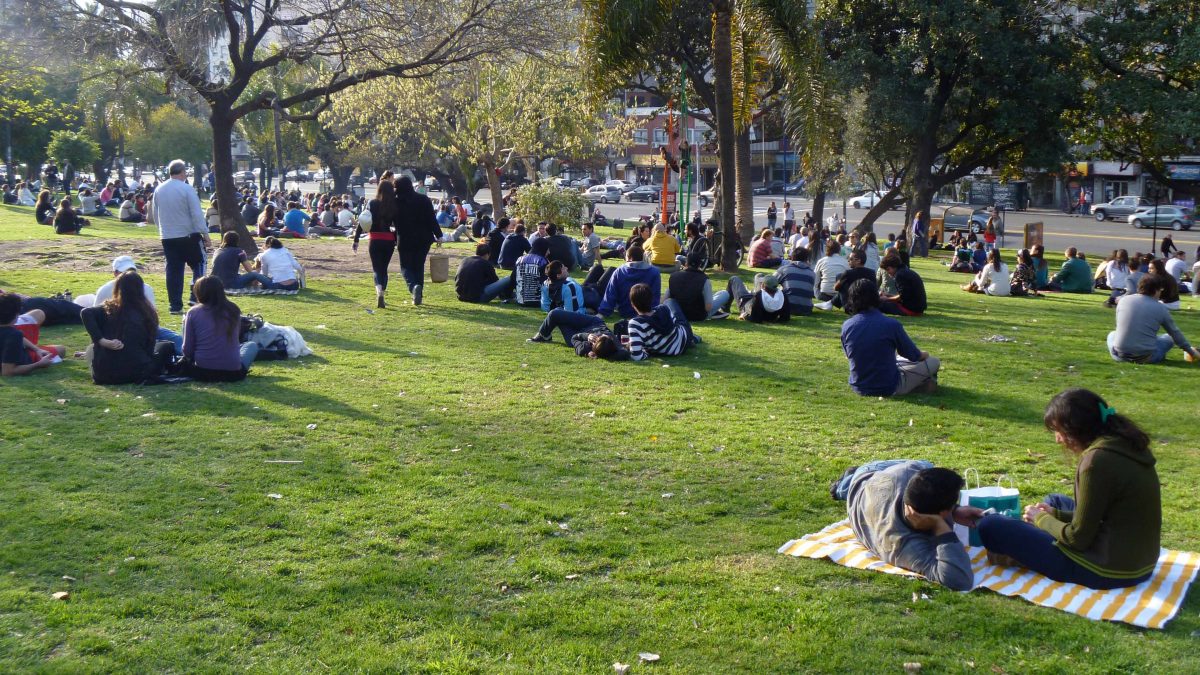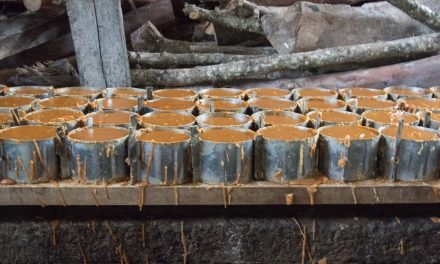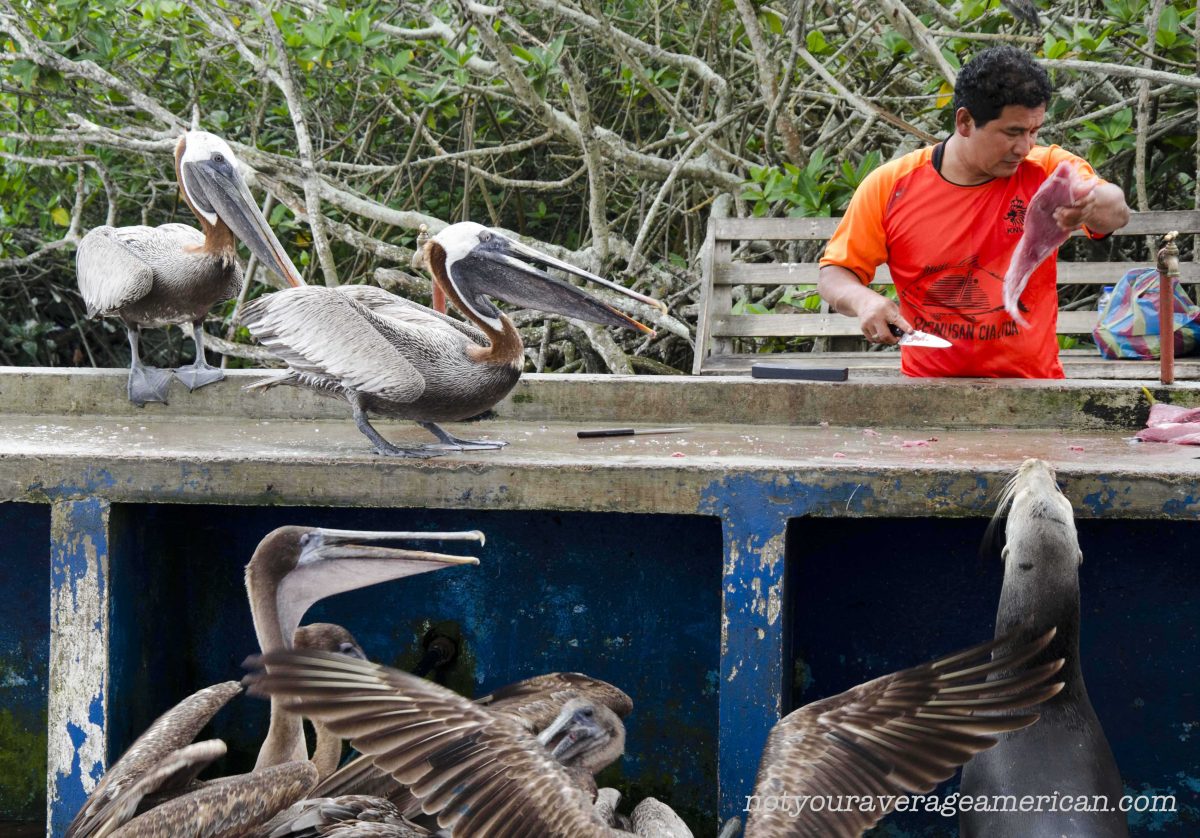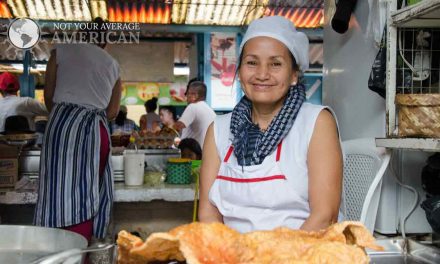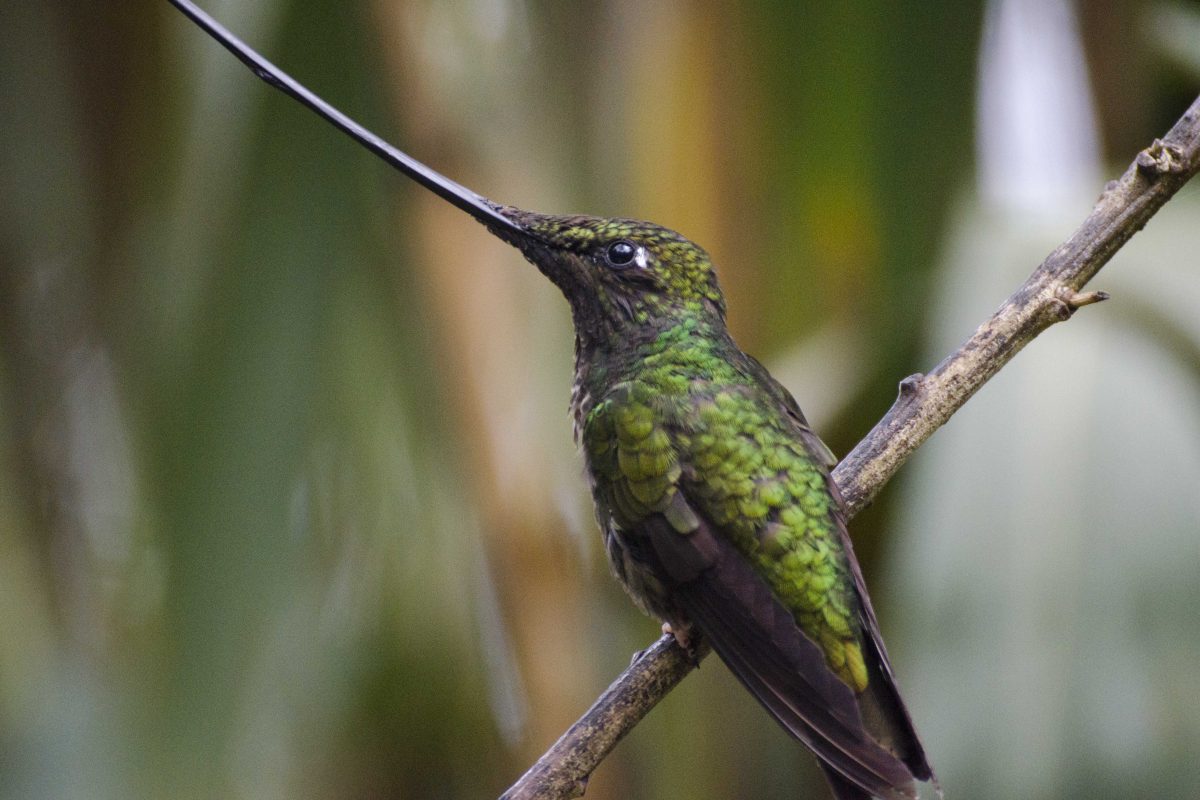Maybe you’ve heard of yerba mate, if only in its ubiquitous form: the maté latte in some American coffee shops. Our year in Argentina taught us that mate is so much more than a pale green, milky drink. In fact, what we drink in the US is really mate cocido but I’m getting ahead of myself. First, mate is pronounced like this: mah-
In Buenos Aires, people drink mate every day. They drink it by themselves, in their homes, at work, on the bus. They drink it with friends at the park playing cards. They drink it hot in winter, carrying a thermos of hot water to constantly refill the cup, and they drink it cold in summer, pouring iced water or fruit juice over the leaves. The latter is also called tereré.
There is an entire mate culture. If a person offers you their mate, it is a sign of inclusion; they want you to feel a part of their circle. I say yes every time it’s offered, even at first when I wasn’t sure that I liked the taste. I saw it as an opportunity to learn more about Argentine culture. Eventually, I learned to like it and now I often drink mate in place of my morning coffee. Saying yes hasn’t hurt my reputation either; each time mate is offered there is a new opportunity for an estadounidense to make a good impression.
WHAT IS YERBA MATE?
Yerba mate is a plant, Ilex paraguariensis, that grows wild in the subtropical jungles of Argentina, Brazil, Paraguay, Bolivia, and Uruguay. It was originally used as a drink by the native Guarani and was later adopted by European settlers who then looked for ways to cultivate the shrub in an agricultural setting. It was (and is) popular for giving energy, mainly because it contains a stimulant that is closely related to caffeine. Here’s more about the caffeine vs. mateine debate. Many people believe that drinking mate promotes a healthy lifestyle. To read the health pros and cons of this herb and to further understand the chemical composition, please check out this Wikipedia article.
In the jungle, yerba mate is short and bush like. Under mono-crop cultivation, it grows taller and larger and can look like a small tree. During our travels to the Missiones Province in Argentina, we saw orchard after orchard under cultivation. We also learned about the complex system of harvesting the tea – it’s not just the picking. It begins by harvesting fresh yerba mate leaves and stems, bagging the leaves and stems, and then transporting the bags to the processing facility. The leaves contribute to the intensity of flavor while the stems add delicate balance, creating a softer flavor. Processing varies depending on the producer and what the intended style and flavor is for the final product. There are several steps to the process.
Step 1 – Blanching. The leaves and stems are flash-heated for 10 seconds to 3 minutes to break the epidermis and stomata in order to halt oxidation and deactivate leaf enzymes.
Step 2 – Drying. The blanched leaves are placed into drying chambers. There they are subjected to smoke, either filtered or unfiltered, and heat of 212 degrees Fahrenheit in order to dry the leaves to 4.5% humidity. This could take 8-24 hours.
Step 3 – Aging. The dried product is placed in special bags, cement or cedar aging chambers. They may remain here for as long as 24 months. The aging process helps to develop the flavor.
Step 4 – Milling. This step is important because the cut of the leaves affects the taste of the infusion.
Step 5 – Packaging. Important to preserve the qualities of a good yerba mate tea.
What has become abundantly clear, especially after I saw the severe divide between the subtropical reserve we visited last year and the local plantations, is the need to support more sustainable production. Although it is rare, it is possible to grow yerba mate in the shade of the jungle. The growth of plants in shade is slower and yields are less but the rewards more than make up the difference. Flavor is superior from mono-cropped plants and the habitat that remains makes for a more diverse ecosystem that not only allows for more plants, animals, and birds, it prevents valuable soil from running off into the rivers. After the jungle is cut down to make room for a plantation, the jungle floor is literally washed away by poor farming practices. Investment in sustainable farming is essential to saving the subtropical forests of South America. We best support those practices by making purchases from environmentally responsible companies. More on that below.
THE PIECES AND PARTS
For a real mate, you need to start with a cup to hold the yerba and the water. The cup is rarely referred to as a porongo which means gourd or calabash. Most mates are made from them. You can also find them made of wood and, more recently, ceramic. But enthusiasts who really want to experience drinking mate should try it from a gourd. However, no matter the composition to an Argentino mate is a mate. A little confusing when you’re new to the terminology but it always makes perfect sense in conversation.
You can buy a selection of mates from just about any artisan’s market in Argentina. You will find gourds that have been dyed, carved with patterns, wrapped in leather, adorned with silver, or any combination of the above. We have even found gourds wrapped in Fimo Ceramic.
We’ve learned a few tricks to help us out. Our first gourds tended to get a funky green mold. That isn’t uncommon and can be reversed but it’s better not to get the mold in the first place. So, when my son came home from a local Argentine camp and told me to add a shot of whiskey to the mixture, I gladly gave it a go. No mold! Since then, I swear by the whiskey. But I’m sure any of your favorite hard liquor will do the job.
Curing The Gourd
To use a gourd as a mate, it has to be cured. That means filling your gourd with yerba mate, topping it off with hot water and letting it sit overnight. The next day, you empty it out and scrape away the loose insides of the gourd. Repeat until you can’t scrape anymore. But, that little bump in the bottom of the gourd, it’s like the gourd’s bellybutton. Leave it alone and don’t try to scrape it away. If you managed to do that, your mate would leak.
He was also taught that after the scraping, you can finalize the cure by adding a hot coal from a fire to the gourd and moving it around rapidly to help seal the inside. I haven’t tried that yet as we haven’t been around any open fires recently. But, next time I plan on attending asado (bbq), I may take my almost cured mate with me!
I also decided to speed up the scraping process. Instead of just using a metal spoon, I used a metal brush – shaped much like a toothbrush – that I bought from the local hardware store. I was able to brush all the gunk out of my mate in one go. Scrape a little, brush a little, scrape some more, until the gourd is nice and clean. Use a fine hand towel or some cheesecloth or paper towel to soak up as much moisture as you can. Then store the gourd in a warm, dry location until you are ready to make your first mate.
The Bombilla
The second tool you need is a bombilla. It is nothing more than a straw and is usually made of metal though there are many bamboo varieties at the different markets throughout Buenos Aires. Most vendors sell a bombilla with a mate but you can spend a lot of money on speciality bombillas: ones with brass at the tip so that you don’t burn your mouth, with bases that are designed to be opened and cleaned, with the logo of your favorite soccer team, or that are just aesthetically pleasing.
The Thermos
The third tool is more mundane – it’s a thermos. You don’t actually have to have one… you can manage with a tea kettle but a thermos makes life easier as you will be refilling your mate continuously and, you may want to take your mate with you. It is nice to keep the water at a consistent temperature – between 176-184 degrees Fahrenheit. Notice that it is well below the boiling point for water.
DRINKING YOUR MATE
So, are you ready to drink some mate?
In the US, you can find tea bags full of yerba mate, the leaves only. Argentinos call them Mate Cocido. It is brewed just like a normal cup of tea. You can even drink it with milk and sugar and no one will think anything of it. It is available in every cafe in Argentina and I’ve recently noticed them for sale in our local Whole Foods and at Trader Joes here in Washington DC.
But the best way to get the full flavor of Yerba Mate is to buy it loose. It includes not only the leaves of the plant but also some twigs and stems. We normally buy a kilo or 1/2 kilo bag. My husband and oldest son like a strong blend and I prefer the varieties stamped with the word suave, or soft. Here in the US, there might not be that much choice. Luckily, I’m still drinking from my Argentine stash.
To make your mate, take your cured gourd and fill it halfway to two-thirds with the yerba mate of your choice. Then, you are going to carefully hold your gourd upside down with your hand over the opening so that the yerba doesn’t all fallout. Tap or shake so that the fine, dry, powdery leaves come into the palm of your hand. When you return the mate right-side up, but at a slight incline, the larger leaves will be a the bottom of the cup near the base and the finer leaves will be on top where they can’t plug up the holes in your bombilla. The yerba should also rest at an incline, like a mountain slope, with more yerba on the bottom than the top. Place your bombilla so that the bottom of it is at the bottom of the pile of yerba and the body of it rests along the inclined yerba. You can now tip your mate so that it can sit up straight and the powdery yerba should not clog your bombilla.
Here is the point where making the mate diverges depending on who is making it. The best mate I have ever tasted was made our guide in the Missiones Province of Argentina, Enrique, so I am giving you his directions. So, my title should really read, How To Drink Mate Like a Paraguayan because that is where he was born! Enrique adds cool or cold water to his yerba, sucks it out with his bombilla and then spits it into the jungle. Of course, if you are indoors, you may have to find an alternate location for the spitting! He claims that this takes away the majority of the bitter flavor of the yerba. Starting with cold water means you are less likely to burn the leaves. He adds a little more cold water and then, finally, adds his hot water. Hot water does not mean boiling! This is not your English grandmother’s cup of tea! Remember, some steam, not lots.
When filling your gourd with hot water, you don’t want to fill it to the top. You only want to wet some of the leaves and pour a couple of tablespoons into the gourd. This allows you to control how much flavor you release. Drink and enjoy!
You will know when you are finished when your bombilla makes a funny noise and/or you can’t get any more liquid.
At this point, if you are drinking by yourself, just add more hot water as you like and drink as much as you want. With each addition of water, you can wet more of the leaves, adding more flavor while allowing your mate to last a long time. If prefer sweeter drinks, you can add sugar to the top of your yerba pile and pour your hot water over the sugar.
For slightly different, step by step instructions, watch this great video by Guayakí Yerba Mate:
SHARING MATE
Okay, this is my favorite part about mate. I love the ritual sharing that happens all around the city on a daily basis. Sometimes, it’s just seeing a group of friends in the park or a couple on the bus passing their mate back and forth. It makes me smile. I have shared mate during a conversation class at LV Studio, with different guides on trips, with shopkeepers, with the guard out in front of our apartment, with my family and with other American friends at the Museum of Mate in Tigre, Argentina. Every time, I feel a little thrill of belonging. That isn’t always easy for a military wife who moves around a lot but the invitation to partake mate always makes me feel included.
Think about it, we drink from the same bombilla which means the person offering to share is willing to chance any germs I might be carrying and I, in turn, am willing to chance any of theirs. Some might see it as a gambling proposition. I see it as the ultimate way to say, I want to get to know you better.
If someone ever asks you to share and you say yes, here is what you need to do. You take the mate in your hands, place your mouth to the bombilla, then sip, enjoy, and drink everything in the gourd before handing it back. You don’t have to be in a hurry! Just drink at your own pace. If you are finished and don’t want more, say gracias as you hand back the gourd. If you would like to be offered another, you can hold off on the thanks and hope it gets offered again! Sometimes, even if you say gracias the first time, it will be offered a second, but I was taught that saying thanks is a polite way to say you won’t want any more.
You will find yourself tempted to touch the bombilla with your hand while drinking. Don’t. It takes talent to get that bombilla well seated and once in the correct position, it should not move. Remember to touch it only with your mouth.
If you are in a large group of people, the mate will make its rounds but only one person is responsible for that – the person who makes the mate in the first place. He or she is called the cebador. After preparing the mate, the cebador takes the first serving. After refilling, he or she hands it to the first person, who drinks and then hands the mate back. The cebador refills and offers it to the next. I have seen this happen with small groups and with large, always with a single mate. I have heard if a group is large, there may be two mates floating around, but I haven’t seen it yet. While the mate is being passed around,
If you want a comprehensive set of rules about drinking mate, the website Circle of Drink, does a great job.
Last but not least, Sustainable Mate
If you decide you want to start drinking yerba mate, I ask that you consider buying from a source that uses sustainable growing practices to save the jungle we have left, practices fair trade to make sure those working to harvest yerba mate receive fair and just compensation for their
Unfortunately, the word organic does not mean sustainable when it comes to yerba mate. Make sure you ask for shade grown and double check for that fair trade logo.
Feel free to share your mate drinking story in the comments below!
This article was originally published on April 2, 2013.
Minor changes have been made and links have been updated.

